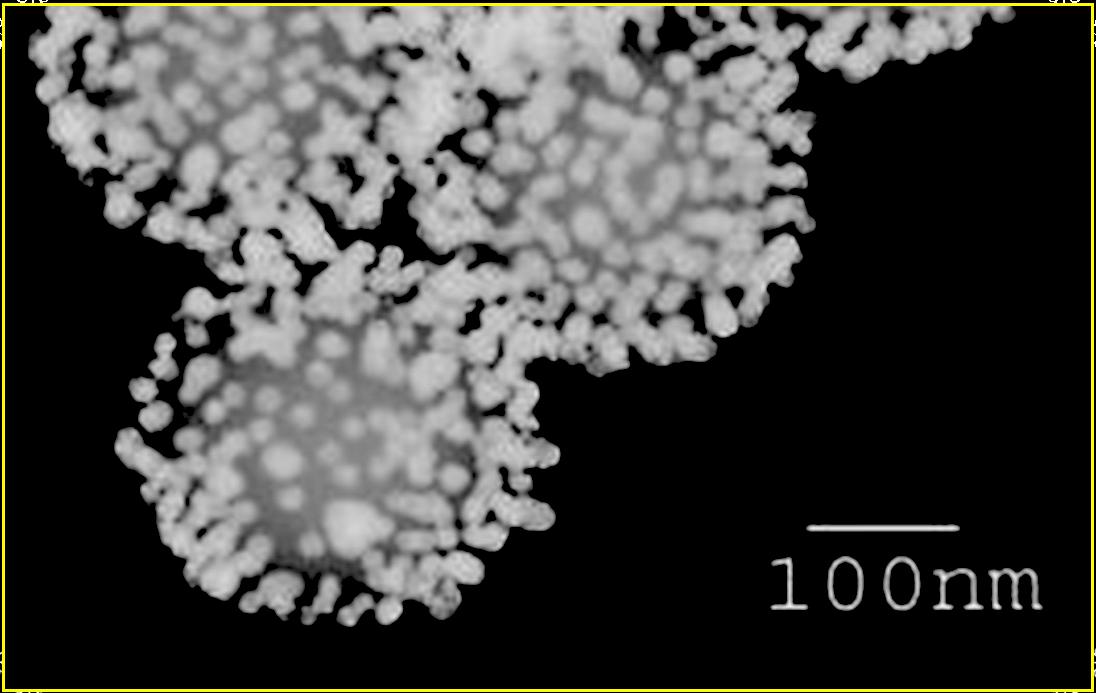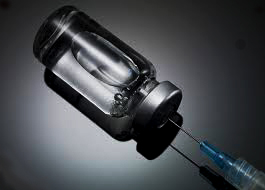I was a long time coming into the Colloidal Silver (CS) camp. I had read many glowing testimonies over the years on the use of colloidal silver, but just never seemed to get around to experimenting with it. I finally succumbed and purchased a colloidal silver generator and have been using CS ever since with very successful results. I think every racing stable should have access to colloidal silver and to economically use it, one needs to make one's own. Thus, every stable should have a CS generator to make their own supply! Yes, you can buy colloidal silver solutions from health food stores and maybe even tack shops, but they ask ungodly price tags for it, plus, moreover, they are listed at being more concentrated than need be. A 10-12 ppm solution is all one really needs which is easily made by a number of methods for pennies and if you want something a bit more stronger, a 20 ppm solution can also be made with just a little more expenditure of time.
Colloidal Silver is often hyped out of this world by many over-the-counter companies selling you the stuff. Don't believe everything you read! As with all things in life, most things have limitations and there are no Cure-Alls. However, saying this, CS does have valuable uses which cannot be found any where else and in a pinch when dealing with infections that are often hard to treat, it may be useful to employ. One can make CS more potent by combining it with other synergetic components. CS by itself is not as powerful in the petri dish as most of our antibiotics, presuming those antibiotics are used on susceptible bacteria which is getting to be more and more a rarity. If the bacteria is a resistant strain or inhabits a biofilm, then even the best antibiotics will be pretty much useless. This opens the door for colloidal silver use.
Silver has been around a long time as a medicinal. It was known in ancient times and often a silver jug or chalice was valued for its antiseptic affect on stored liquids. Silver coins were dropped in water storage containers to prevent contamination by various organisms. Baby rattles and pacifiers were often made out of silver for similar reasons. The medical establishment of the early 1900s were very enthusiastic about silver use. In the past, silver was prescribed topically, orally, and in injectable forms in the medical literature of the late 19th and early 20th centuries. In these modern times of the antibiotic revolution (since the 1940s), silver has passed out of popularity, even if still used in certain specialized applications.
What are some of its limitations? As stated above, Colloidal silver when used alone is in the range of 20% effective in fighting many infectious pathogens (in the petri dish) when compared to our prescribed mainstream antibiotics at the best of times of both. Unfortunately, we seldom live in a perfect world. Note that the gastro-intestinal tract can be just as detrimental to the bio-absorbability of CS as with any other oral antibiotic. Also note that CS can be just as detrimental to GI bacterial flora as the "bad" pathogens you are trying to target. There are a number of ways to pump up the potency of CS, one of which is giving it intravenously or injecting it locally directly in contact with the infection. Giving it IV could conceivably boost its effectiveness over twice the oral route allowing it to closely approach prescription antibiotic efficiency. Below excerpts from old medical journals seem to document that fact very well. One can also combine such compounds as Hydrogen peroxide or DMSO with it to boost effectiveness. Lastly, let me address the "Blue Man" side-effect which is often routinely attributed in the main stream media as a classic horror symptom to anyone daring to use colloidal silver. First off, let me assure you that there are few "blue people" around compared to those of us that use colloidal silver. Secondly, if you look closer at those who have suffered blue skin from CS use, you will find that they are atypical and have dosed themselves on extremely high doses, often for years of daily use. The famous blue man that received a lot of TV airtime a few years ago applied CS to the skin everyday religiously along with numerous sun-tanning sessions which were never mentioned. It was later discovered that UV light (used in tanning beds) when exposed to silver compounds in a collagen matrix as found in skin would result in a photo oxidation reaction producing blue skin.---not dissimilar to how the old photographic silver plates produce an image. You will also discover that when these blue people made their CS in their kitchens, they used tap water. Another no-no! Always used distilled water! Tap water contains minerals that can produce silver oxides which are to be avoided! We want pure silver ions oar particles only!
Though modern colloidal silver usage is mostly administered in either oral or topical forms, I am most interested in it as an injectable or inhaled as a nebulizer solution. Intravenous protocols using Colloidal Silver were commonly employed during the first half of the 20th century and written up in the journal articles. Here are some excerpts from old medical journals and note that Colloidal silver solutions had brand names and referred below as: Collargolum, collargol, electrargol (collargol differs from electrargol in that it is a chemically made colloid silver while electrargol is obtained by electrical means), Crede, etc:
Colloidal silver was first described by Carey Lea in the American Journal of Sciences in 1889; but- his discovery was simply a laboratory curiosity without practical value, as his product was unstable and impure and had no field of application. Crede of Dresden, working wholly independently (Lea's experiments were found by him only in later researches), came to the conviction that an efficient general body disinfection could be accomplished only by metallic but soluble silver, and not by means of silver salts; and he instructed the Heyden chemical factory to make experiments in this direction. It is due to his work as well as to that of the Heyden factory, that, by new and improved processes, a stable and pure colloidal silver (collargolum) was elaborated. And it was Crede who developed the method of internal silver treatment.
Collargolum consists of small, hard, brittle, bluish-black scale-like pieces. It is soluble in distilled water to the extent of 1:20 and remains stable even after months. Solutions may be prepared with ordinary drinking water. They may be boiled, but this is unnecessary, as collargolum is itself antiseptic. Lea's colloidal silver precipitates on being boiled.
Collargolum may be introduced into the organism by inunction, subcutaneously, by mouth, rectally and intravenously. When given by inunction, absorption takes place in the upper layers of the corium. The dose of collargolum ointment (unguentum Cred6) is 1 to 3 grams given 1 to 4 times daily. In chronic sepses (furunculosis, puerperal fever) up to 30 inunctions may be given.
The effects of the subcutaneous injection are less rapid and certain, absorption being slow. Per os, 1:1000 to 1:200 collargolum solutions may be given in teaspoonful or tablespoonful doses 2 to 5 times daily on an empty stomach; this is especially indicated in dysentery, gastric catarrhs, etc. As an enema, 1:500 solutions are used, a cleansing clyster being given beforehand. This should be given twice daily for at least 8 days. The method is praised by Prof. Schlesinger and Drs. Loebl and Kornfeld for its simplicity and safety, and because larger doses can be conveniently administered. The action of the silver when introduced by this route is especially energetic on the neighboring organs, such as the uterus and peritoneum. But the best method is the intravenous, which is perfectly safe and is especially indicated when the blood is the seat of infection, as in endocarditis.
As collargolum is rapidly eliminated, it must be constantly supplied to the organism when a permanent effect is desired. Its efficacy is fully apparent only when the whole clinical picture, not merely temperature and pulse, is considered. In a septic process, the temperature does not always correspond to the severity of the infection; and equal importance must be conceded to the general symptoms. After the use of collargolum subjective improvement almost invariably precedes temperature or pulse improvement, occurring, when given intravenously, after 4 to 6 hours, and when inuncted after 8 to 12 hours. Nervousness, headache and stupefaction abate, the patient is relieved and refreshed, and shows more interest in his surroundings. Appetite and sleep return. Often there is a mild diaphoresis and increased intestinal activity. Collargolum directly combats the septic affection and inhibits bacterial development.
But the antiseptic has of course its limitations. It may fail to save moribund patients or those in whom the powers of heart and the vasomotors are exhausted. Nor can it affect abscesses which are out of the reach of the body fluids. Its use should be begun as soon as there is danger of the spread of a local infection.
Intravenous Injections of Colloidal Silver
Francke (Medizinische Klinik, 1908, iv, 12)
States that in grave infectious processes, such as sepsis, puerperal and otherwise, colloidal silver should be employed in 4 to 5 per cent solution as an intravenous injection, 30 grains being injected daily or every other day, according to the type of the affection and the effect of the remedy. In one instance of severe gonorrhceal sepsis, with chills persisting for weeks, one such injection brought about a rapid and permanent fall of temperature. Injections of colloidal silver are usually followed by a chill succeeded by a rise of temperature even as high as 105.8° F, but this phenomenon has no untoward sequels. The employment of this agent by intravenous injection is superior to its exhibition by enema or inunction, and the former is the preferable mode of administration.
Intravenous injections: Rabbits inoculated with fatal dose of staphylococcus aureus did not die, if 1 cc of a 1% colloidal silver chloride solution was given intravenously 15 to 20 hours later. The control rabbits which received similar injections and not treated with colloidal silver chloride promptly died with multiple abscesses of the kidneys, heart, and other organs. The rabbits were sometimes not disturbed by 2 cc of the same solution given intravenously. Freshly made solutions were found to have greater germicidal value than the preparations several days or a week old.
COLLOIDAL SILVER BY RECTUM
Dr. H. S. Loebl, of the Franz Joseph Hospital, reports that during the past two years unguentum Crede and collargol have been used very frequently in Dr. Schlesinger's wards. In some cases intravenous injections of collargol (colloidal silver) were found impossible on account of obesity or smallness of the veins. Collargol cnemata of 2\ to 4 grn. in oz. of distilled water were then administered twice daily for eight days, a cleansing enema being given beforehand. Besides the histories of two cases, the speaker demonstrated the temperature curves of three severe cases of sepsis, a puerperal infection, and a thrombo-phlebitis following typhoid, in which the favorable results were doubtless due to collargol. In four cases the enemata had to be stopped, partly because of negative results, partly on account of other complications. No definite results were obtained in six feverish phthisical cases. The advantages of the enemata lie in their safety and simplicity, and in the ease with which the dosage may be increased.
Prof. Hermann Schlesinger also believes that collargol (a colloidal silver formulation) is a most effective weapon in septic conditions. Especially when administered intravenously, Schlesinger has seen apparently hopeless cases saved by it. In his experience with the rectal application was just as effective as the intravenous method. -Wien. klin. Woch., 1903, No. 44.
SOME FURTHER EXPERIENCES WITH SOLUBLE SILVER
BY A. DWORETZK.Y, M. D., OF RIGA.
The author first draws attention to the difficulty of judging the effects of therapeutic procedures, and to the necessity of prolonged observation of the natural course of the diseases in which they are employed as well as extensive experimentation before deciding as to their efficacy. Nothing is more hurtful than premature conclusions and the false expectations which they necessarily entail. His results show, however, that the medication under consideration simplifies the treatment of affections which is otherwise difficult, tedious and complicated; that it hastens their frequently uncertain and lengthy cure; and that it shows a specific action entirely different from that of other preparations and methods. His paper is designed to furnish further statistical data on the question of internal blood disinfection by means of colloidal silver, the soluble antimycotic chemical introduced by Crede in the year 1897.
After referring to the extensive literature of the drug, and to the seven cases of erysipeloid and septic abscess with general infection, furunculosis, osteomyelitis, and puerperal fever treated with excellent results with the unguentum Crede which he has himself reported (Zeitschrift fur praktische Aerzte, No. 17, 1898, Therapeutische Monatshefte, No. 23, 1900,) he states that he has ten further cases in which treatment with the soluble silver (collargolum) was most satisfactory in its effect.
Comparative therapeutics, though but little studied, is undoubtedly of greater value in determining the properties of a remedy than laboratory experiments made upon healthy animals; and Uworetzky lays stress upon the results obtained by Dieckerhoff in the treatment of the PURPURA HEMORRHAGICA of horses; to which we have already referred and have confirmed the report of its prompt action in this affection, in which veterinary medicine is otherwise powerless.
A. Weidmann (Oestreichische Monatsschrift fur Thierheilkunde, etc., No. 12, 1897 and No. 8, 1898) has employed the remedy in lymphangitis, phlegmons and various septic diseases in animals, and has noted especially favorable effects on the general condition. He rapidly and permanently cured obstinate otitis in dogs by the local use of lactate of silver (actol) solutions and the unguentum Crede.
Intravenous injection of the collargolum ( a CS product) has been successfully employed by Tannebring (Berliner Thierarztliche Wochenschrift, No. 14,1899) and Meissner (ibid) in the malignant, catarrhal fever of the cow, an affection otherwise usually fatal; by Krtiger, (Berliner thierarztliche Wochenschrift, No. 14, 1899) in a severe and otherwise hopeless case of intestinal anthrax in the cow. C. Evers (Berliner thierarztliche Wochenschrift, No. 15, 1900), found it a very efficacious prophylactic measure for the dysentaria neonatorum of calves, which is caused by a micro-organism, is highly contagious, and increases in virulence in its transmission from animal to animal. In two hundred and fifty cases he gave the calves repeated intravenous injections during the first three days of extrauterine life with excellent results; and his methods were beyond cavil, and his findings supported by numerous controll experiments. Briihlmeyer (Zeitschrift fur Veterinarkunde, No. 3, 1899) indeed got no effect from the repeated intravenous injection of colloidal silver in a very advanced case of phlegmon of the glutei in a horse; but Professor Roder (Archiv furwisscnschaftlicheund praktische Thierhcilkunde, Nos. 3 and 4, Vol. xxv), cured a similar case by a single energetic inunction of the colloidal silver ointment.
Tetzner (Zeitschrift fur Veterinarkunde, etc., Nos. 8 and 9, 1899) finds the dessicating action of the colloidal silver especially noticeable in obstinate ulcerations with unhealthy, readily bleeding granulations. A chronic lymphangitis with tendency to abscess formation in a horse was entirely cured by the injection of 1 gram (15 grains) of collargolum, repeated after two days.
The fact that horses suffering from chronic and concealed glanders have their symptoms increased by the intravenous silver injections, so that the affection becomes acute and can be readily diagnosticated, is of the greatest interest.
Next, I would like to briefly discuss Dr. Robert Becker's work that I touched upon within my arthritic joint web page. He discovered that silver ions generated by a positively charged silver electrode inserted within the wound could transform bone fibroblast cells and epithelial cells, resulting in de-differentiation of these cells into embryonic cell types. In short what he is saying is that silver ions can somehow produce stem cells from an adult's body cells and perhaps, promote regeneration of damaged tissue that would not ordinarily be able to fully heal.
Though neither he nor any other researcher has speculated that an injectable colloidal silver solution could be substituted for his positively charged silver electrode, I think there is a good chance it could offer similar results. It would be much less invasive than inserting a silver electrode into a wound or joint! Simply inject a CS solution into a damaged joint (intra-articularly) and you should have the silver ions in place to help transform regular cells into stem cell types along with the silver ion fighting any infections that may also be within the joint at the same time. Granted, he did combine a low voltage charge in conjunction with the silver electrode, but I think this simply allows the silver ion to migrate into the tissue and is not necessary, if one injects a solution in which silver ions are already diffused and free to move around within the joint. However, if the low grade electric current is indeed a crucial factor, one could easily inject a CS solution and then place electrodes on the joint to electrify the structure to closely duplicate Dr. Becker's work.
For whatever it may be worth as this is totally undocumented by me, Lisa Cramer in 2007 writes: "I have had a fingertip regenerated! I cut off the end of my finger while working at our local soup kitchen. The doctor said I lost the nail-bed, and that I would no longer have a nail on that stub of a finger. He also told me to keep it dry, and return the next day to change the bandage. However, upon arrival at home, I soaked my finger in CS, and then wrapped it in CS-soaked gauze and taped it. At first I changed the gauze several times a day. Then I just changed it as needed. I had a perfectly restored finger in three weeks!"
Colloidal Silver Generators
The top photo on this page is that of silver ions, the below photo is of larger silver nanoparticles, both have proven useful in medicinal CS solutions and both are contained in all CS solutions, if at different ratios depending on the generating method.
Silver ions (Ag+) consists of a single electron of the silver atom being stripped off by a positive low voltage charge of the generator's silver electrode. These ions are water soluble and diffuse evenly. As you can imagine, an electron is very small! To be perfectly proper here which I am not, I would not call a silver ion solution, colloidal silver, but ionic silver. I won't be proper, but know, the two exist.
Silver nanoparticles are made up of groups of silver atoms and they range in size from 1 nm (nanometer to 100 nm.
Colloidal silver can generally be made by three methods:
1) high voltage AC (HVAC) current . . . . . . . . .this method can be dangerous, even deadly because high voltage is involved which is often utilized in a less then well protected environment. For large batch production in the quickest time, this method is the best, but it will produce the larger silver nanoparticles (80-96%) and fewer silver ions (4-20%). Both the nanoparticle and the silver ion have been shown to be effective as an antiseptic and are generally considered safe for oral ingestion, topical use, and injection. It is also said that the nanoparticle solution tends to have a bit better storage properties. Often homemade silver generators are made from old microwave ovens and plans can be found on the web for such construction. I won't discuss HVAC further here.
2) low voltage DC (LVDC) current . . . . . . . .this is my preferred method and is relatively safe to employ because very small voltages are being utilized. Most all of the commercial generators will be of this variety, plus there are many homemade plans on the web for one to make your own. The LVDC method will produce the smaller silver ion in the 90% range with 10% or less nanoparticles, and personally, my instincts tell me a smaller size when compared to a nanoparticle is probably better. Plus it is said that the positive charge of the silver ion will be attracted to pathogens that are negatively charged. It will also produce a batch at a concentration of 7-12 ppm which is quite adequate for most all therapeutic uses. If you want a stronger solution, one can extend generating times to increase to approximately 20ppm, beyond this range, the CS solution often is less stable with no therapeutic benefit.
3) Computer generated 5 Hz waveform Colloidal silver . . . . . . this is relatively new form of generating colloidal silver implementing a 5 Hz frequency wave into the process along with low DC voltage. Thanks to the Spooky2 frequency generator people, we now have access to a very accurate instrument for a fraction of the cost (approx US$100). This frequency generator not only makes a superior colloidal silver formula, but it can be used as a rife machine and in other protocols requiring specific frequencies.
1. The computer generated 5 Hz triangular shaped waveform uses pulses of varying amplitude direct current. The amplitude sets the silver particle size drawn off the silver rod. Differing sizes of particles will be drawn off, each nanometers in size. Though both silver ions and nanoparticles fight infections, it is generally believed silver nanoparticles may be superior to silver ions. Most DIY and commercial colloidal silver products tend to have mostly a much higher silver ion ratio to silver nanopartcles.
2. The waveform has a 10% DC offset that speeds up the manufacturing time.
3. The silver rods do not require cleaning. Swap Waveform inversions will turn the silver hydroxide buildup on the anode (+) into plated silver that sediments to the bottom of the container. This prevents contamination of your silver solution. Plus as a final step, my formula is vacuum filtered for the cleanest CS available.
Though I am not pushing this set-up, I personally feel it is the best way to make a superior colloidal silver formula. In the past, I have used the "silver puppy" (Coyote Zenterprizes) for many years with much satisfaction which can be seen pictured to the right. Now, I am sold on the frequency generated system and would not go back to the silver puppy. No matter the brand, we want to see a clear, perhaps yellowish final colloidal silver color. Color in colloidal silver solutions other than clear or a pale yellow is not acceptable. A golden brown or gray should be avoided and is a symptom that something has gone amiss. These last two colors are probably the result of nanoparticles clustering in large sizes reflecting light, producing those colors. A crystal clear color will denote small evenly diffused silver ions. The yellow color will be more indicative as a sign of higher silver nano-particle content. The higher 20+ ppm solution concentrations will be progressively hard to keep colorless, turning yellow. In the 1926 book, Practical Colloid Chemistry, it is written under the section on the "Colours of Colloidal Metals" (page 69): "The continuous change in colour from yellow to blue corresponds to a change in the absorption maximum of the shorter to longer wave-lengths with a decreasing degree of dispersion. This is a general phenomenon in colloid chemistry illustrating the relation between colour and degree of dispersion." It appears a wide variety of colloidal metal solutions all have a yellow phase. For true electro-colloidal silver, the silver particle size range that can appear yellow is .01 to .001 microns (10 to 100 angstroms) because that is the size of the silver particles that best absorbs this indigo light, leaving only its inverse color yellow. The final transparent yellow appearance only shows up after the particles have become evenly dispersed. My colloidal silver produced using the frequency generator may appear clear when freshly made, but in hours, if not days, will eventually turn a pale yellow when the nanoparticles become dispersed. Another sign that this method of CS production seems to produce more silver nano-particles than ions when compared to simpler battery or low voltage CS generators without the use of a frequency.
I think it is agreed upon that both the silver ion and silver nano-particle which is produced in colloidal silver generation is therapeutically effective, but there seems to be an impression out there that the silver nano-particle is more desirable as long as it is small. The purists say that silver ions can not be properly labeled a colloid while silver nano-particles can. All low voltage generators tend to produce mostly a high silver ion / low silver nano-particle content product. This new frequency method seems to produce more nano-particles than the simple low voltage units. My CS solution was crystal clear when finished, but after about a day or more, turned a very pale yellow which to me denotes that the silver nano-particle content was becoming dispersed and producing the yellow color wavelength that the eye could detect. Thus, this formula apparently has a higher silver nano-paricle content than the norm. In the past, my previous low voltage formula pretty much stayed crystal clear which seems to denote a very high silver ion content versus a very low silver nano-particle one.
High quality distilled water is a MUST to use to make high quality colloidal silver! You should also have some type of stirring method incorporated with your silver generator. I prefer either the heat convection or magnetic stirrer types.
Actually, most commercially sold Colloidal Silver generators are quite expensive with many pushing the $200+ mark which is another reason, I prefer the spooky2 frequency system. It is a most economical unit with many versatile uses. If you are still hesitant about spending money, try making your own simple unit and according to one's electronic experience and skill, make a generator for pennies that are just about as good as anything that can be bought ready made with perhaps the exception of the spooky2 system that uses a 5 Hz frequency wave. The most basic units can be made by simply using batteries or wall transformers attached directly to pure silver (.999+) electrodes.
My process to make injectable Colloidal silver can be clicked on below. It is virtually impossible to buy the formula and this method probably offers the best way to make injectable quality CS for those hopeless cases where nothing else is left to try. Plus it is always best to use the freshly made formula for best results:























